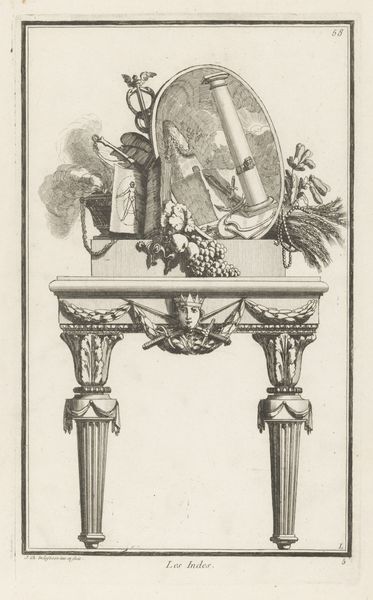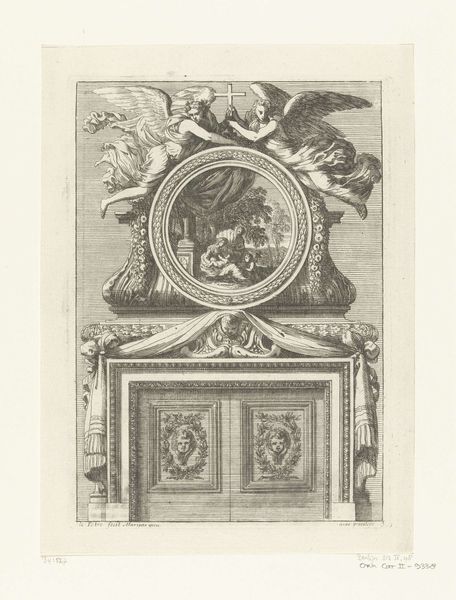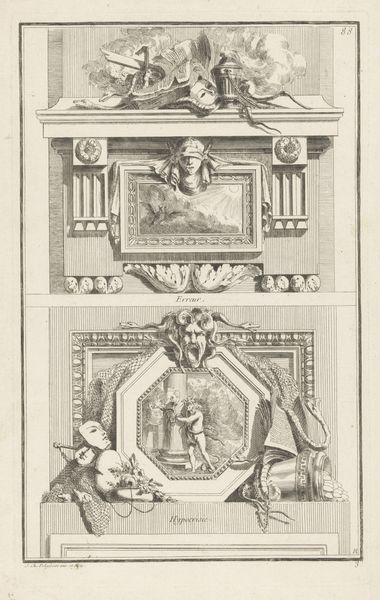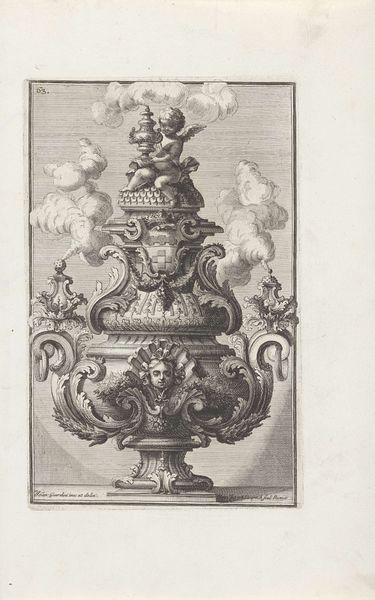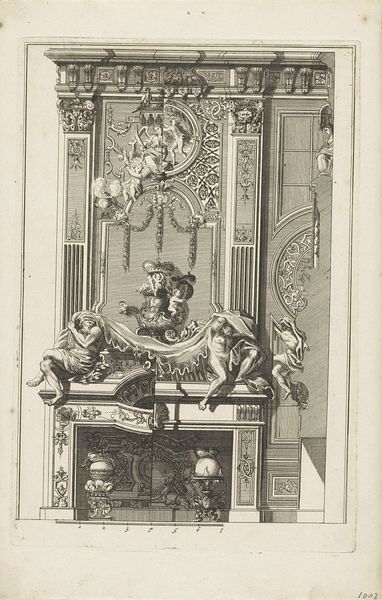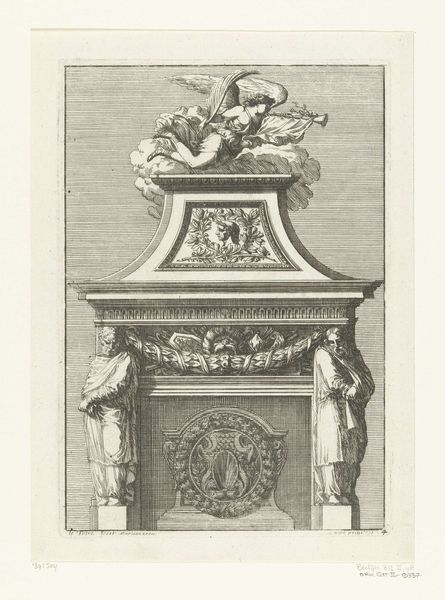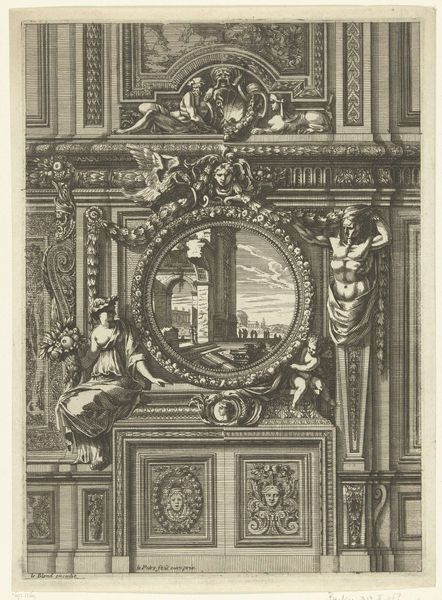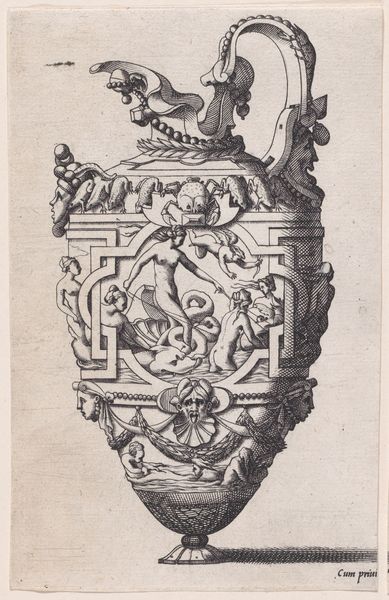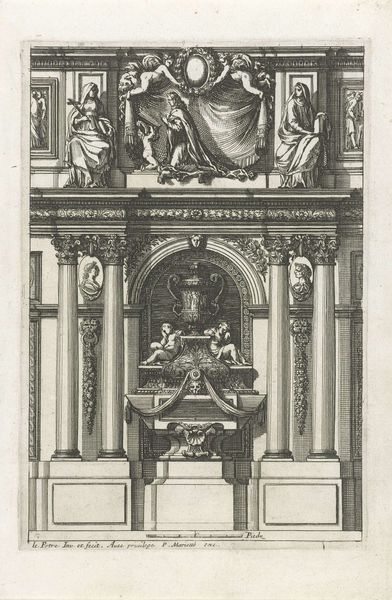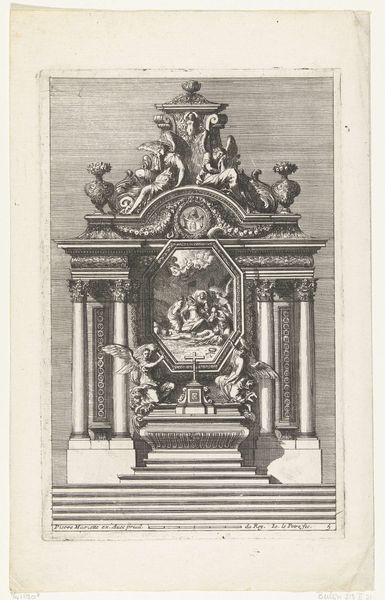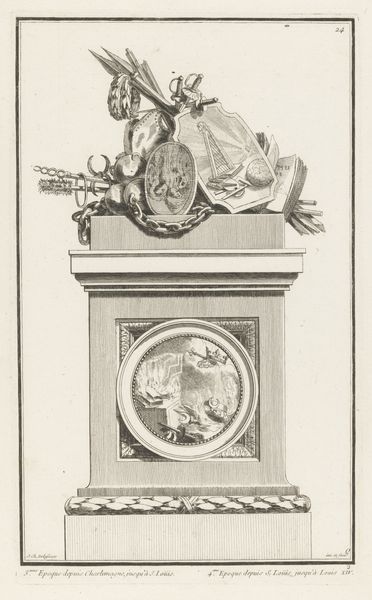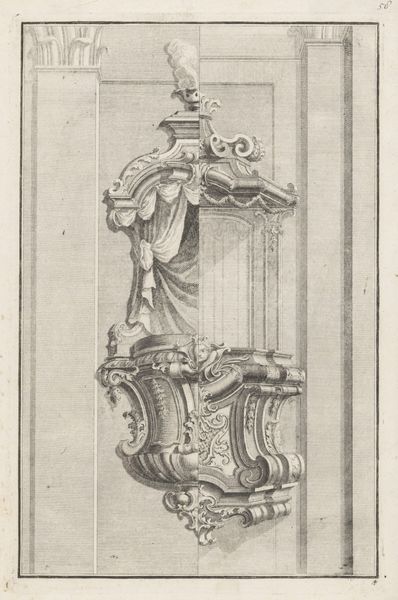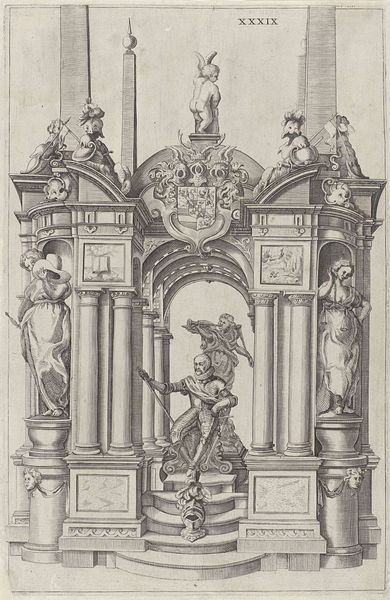
engraving
#
baroque
#
old engraving style
#
figuration
#
line
#
history-painting
#
engraving
Dimensions: height 247 mm, width 192 mm
Copyright: Rijks Museum: Open Domain
Editor: This engraving, "Epitaaf," created by Jean Lepautre between 1640 and 1703, depicts what seems to be an elaborate tomb or memorial design. It’s quite somber and intricate; the figures have such melancholic expressions. How do you interpret this work, particularly with the cross and weeping figures so prominently displayed? Curator: The power of this image resides in the emotional and psychological weight it conveys through symbolic representation. Notice how Lepautre has positioned the cross centrally, almost crowning the structure. Its winged base suggests ascension, a striving toward the divine. This paired with the mourning figures reflects a complex attitude to death common in the Baroque: grief tempered with hope, loss interwoven with faith. Editor: That’s a fascinating perspective! I initially focused on the sadness, but now I see the layered meanings. Is there significance in the circular relief at the center? Curator: Absolutely. Consider the history painting depicted there: who are these figures and what story might it be telling about those interred? How does that scene contribute to the narrative of memory and continuity? And what is the emotional import of the skull? Each carefully rendered detail builds a story of mortality. What enduring message about the human condition did Lepautre aim to convey with these culturally significant symbols? Editor: I see now; it’s not just about grief, but about remembrance and the ongoing narrative of life, faith, and legacy woven together. Curator: Precisely. By exploring the cultural memory embedded within these symbols, we begin to appreciate the psychological weight that an image such as this carries across centuries. Editor: It's amazing how much information can be conveyed through symbols. This work encourages reflection on legacy, grief, and hope. Curator: Indeed. Visual symbols have a transhistorical potency. Learning to read their language offers an enduringly valuable way to access cultural wisdom and shared humanity.
Comments
No comments
Be the first to comment and join the conversation on the ultimate creative platform.
